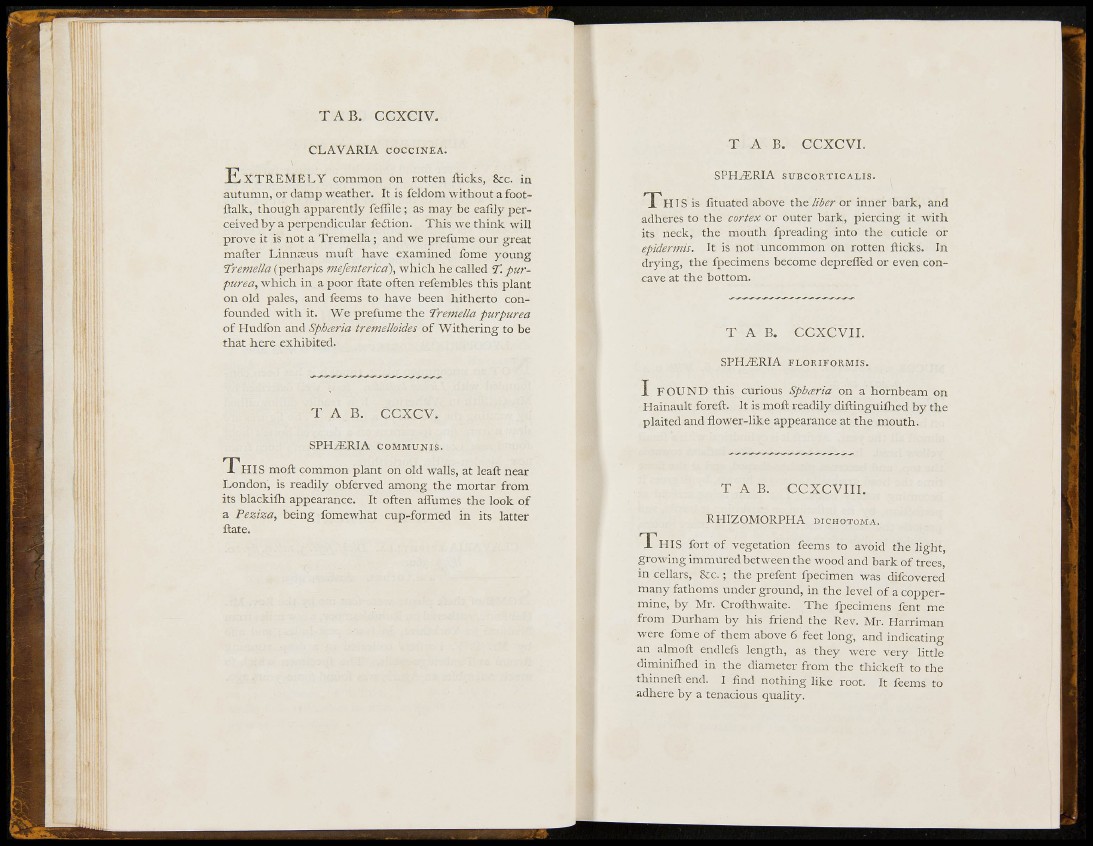
TAB, CCXCIV.
CLAVARIA COCCINEA.
E X T R E M E L Y common on rotten ñicks, &:c. in
autumn, oi" damp weather. It is feldom without a footñalk,
though apparently feffile; as may be eafily perceived
by a perpendicular feótion. This we think will
prove it is not a Tremella; and we prefume our great
mañer Linnxus muft have examined fome young
Tremella (perhaps mefentericd), which he called T. purpurea,
which in a poor ñate often refembles thi^ plant
on old pales, and feems to have been hitherto confounded
with it. We prefume the 'Tremella purpurea
of Hudfon and Spharia tremelloides of Withering to be
that here exhibited.
T A B. CCXCV.
S P H J E R I A COMMUNIS.
T H I S moft common plant on old walls, at leaft near
London, is readily obferved among the mortar from
its blackifli appearance. It often aíTumes the look of
a Peziza, being fomewhat cup-formed in its latter
ñate.
T A B . CCXCVI.
SPH^RIA SUBCORTICALIS.
T H I S is fituated above the liber or inner bark, and
adheres to the cortex or outer bark, piercing it with
its neck, the mouth fpreading into the cuticle or
epidermis. It is not uncommon on rotten flicks. In
drying, the fpecimens become depreffed or even concave
at the bottom.
T A B . CCXCVII.
S P H ^ R I A FLORIFORMIS.
I FOUND this curious Spharia on a hornbeam on
Hainault foreft. It is moft readily diftinguiilied by the
plaited and flower-like appearance at the mouth.
T A B . CCXCVIII.
RHIZOMORPPIA DICHOTOMA.
T H I S fort of vegetation feems to avoid the light,
growing immured between the wood and bark of trees,
in cellars, &c.; the prefent fpecimen was difcovered
many fathoms under ground, in the level of a coppermine,
by Mr. Crofthwaite. The fpecimens fent me
from Durham by his friend the Rev. Mr. Harriman
were fome of them above 6 feet long, and indicating
an almoft endlefs length, as they were very little
diminiflied in the diameter from the thickeft to the
thinneft end. I find nothing like root. It feems to
adhere by a tenacious quality.
I Ü